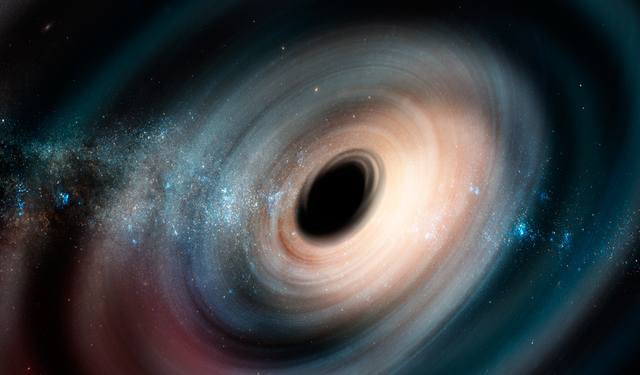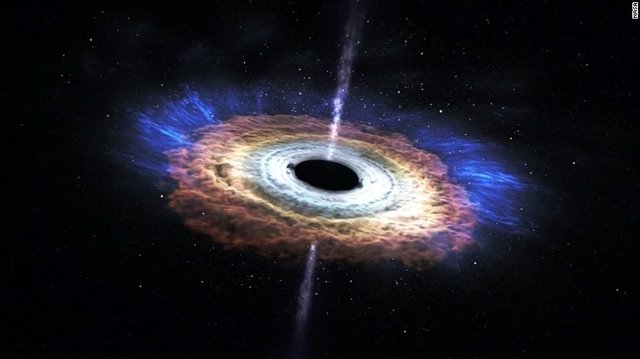You knew what?...

Did you know that in the universe there are colossal monsters that swallow everything?😲 These astronomical phenomena are called black holes, but first of all, we ask ourselves the question of gold, what is a black hole?
Well, here we go, black holes are the cold remains of ancient stars, as well as our sun, so dense that no material particle, not even light, is able to escape its powerful gravitational force, black holes were discovered by the Famous scientist Stephen Hawking. While many stars end up becoming white dwarfs or neutron stars, black holes represent the last phase in the evolution of huge stars that were at least 10 to 15 times larger than our sun, and yes, that's right, bigger than Our sun sounds amazing, doesn't it?
When the giant stars reach the final stage of their lives they explode in cataclysms known as supernovae. Such an explosion disperses most of the star in space vacuum but there are a large number of "cold" remains in which fusion does not occur.
In young stars, nuclear fusion creates energy and a constant external pressure that is in balance with the force of inner gravity produced by the star's own mass. However, in the inert remains of a supernova there is no force that resists gravity, so the star begins to fall back on itself.
Without a force that slows gravity, the emerging black hole shrinks to a zero volume, at which point it becomes infinitely dense. Even the light of this star is unable to escape its immense gravitational force, which is trapped in orbit, so the dark star is known as black hole.
Black holes attract matter, and even energy to it, but not to a greater extent than other stars or cosmic objects of similar mass. This means that a black hole with the same mass as that of our sun, would not "aspirate" more objects than our sun with its own gravitational force.
The planets, light and other matter must pass near a black hole to be attracted within its range. When they reach a point of no return, they are said to have entered the event horizon, a point from which it is impossible to escape because it requires moving at a speed greater than that of light.
Now, it is not to alarm them but in the center of our galaxy, the milky way, there is a supermassive hole, and yes, it sounds somewhat worrisome, doesn't it? But there is no need to worry, since this hole has been at the center of our galaxy since its creation, so we do not have to worry that we are devoured by these space monsters hahaha😂

Small but powerful:
Black holes have a small size. A hole of a solar mass of one million, like the one suspected of being in the center of some galaxies, would have a radius of about three million kilometers, that is, only about four times the size of our sun. A black hole with a mass equal to that of the sun would have a radius of three kilometers.
Since they are so small, distant and dark, black holes cannot be observed directly. Despite this, scientists have confirmed the long-held suspicions of its existence. This is usually done by measuring the mass of a region of space and looking for areas with a large dark mass.
There are many black holes in the binary systems. These holes continually attract mass from their neighboring star, increasing the black hole and shrinking the other star, until the black hole becomes large and the companion star fades completely.
There may be supermassive black holes in the center of some galaxies, including our Milky Way. These huge bodies can have a mass of 10 to 100 billion soles. They are similar to smaller black holes but reach such dimensions as there is a lot of matter inside the galaxy that they can attract. Black holes can accumulate unlimited amounts of matter; they simply become even denser bodies as their mass increases.
Black holes have captured the imagination of the public and played a prominent role in extremely theoretical concepts such as wormholes. These “tunnels” would allow rapid trips in space and time, but there is no real evidence of their existence.
I hope you like this information made by this humble server @ andreseduar9
Source of images: National Geographic
Congratulations @andreseduar9! You have completed the following achievement on the Steem blockchain and have been rewarded with new badge(s) :
You can view your badges on your Steem Board and compare to others on the Steem Ranking
If you no longer want to receive notifications, reply to this comment with the word
STOPDo not miss the last post from @steemitboard:
Vote for @Steemitboard as a witness to get one more award and increased upvotes!